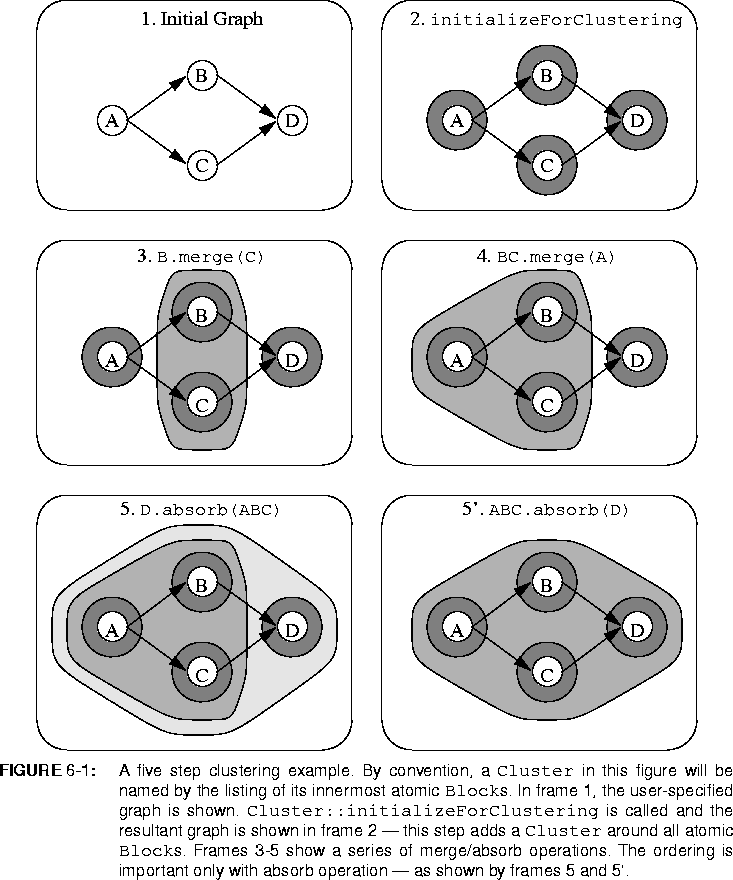6.4.2 Absorb and Merge

Cluster::merge and Cluster::absorb. Both of these methods can take up to two arguments. The first argument is the Cluster to absorb/merge and the second argument(optional) specifies whether or not to remove the absorbed or merged Cluster from the original parent Galaxy. The
Cluster::merge method takes the contents of the Cluster being merged and moves them into the Cluster pointed to by the this pointer. A merge operation is communicative. A series of merge steps is shown in figure
6-1 frames 3 and 4.













